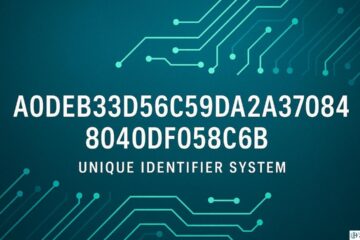In the rapidly evolving landscape of cybersecurity, staying one step ahead of potential threats is paramount.
The Language-Theoretic Security Approach (LANGSEC) emerges as a fascinating and innovative paradigm to fortify digital systems against various attacks.
This comprehensive guide will walk you through the intricacies of LANGSEC, its underlying principles, real-world applications, and the invaluable protection it offers to modern computing environments.
What Is LANGSEC?
At its core, LANGSEC is a revolutionary concept that leverages formal language theory to enhance the security posture of software systems.
Unlike traditional security measures that rely on ad hoc techniques, LANGSEC introduces a systematic approach to safeguarding digital systems by treating all inputs as potentially malicious.
How LANGSEC Differs from Traditional Security Approaches

Shift from Ad Hoc Approaches
Unlike conventional cybersecurity practices, which often rely on ad hoc measures and signatures to detect and prevent threats, LANGSEC takes a systematic and principled approach. It treats security vulnerabilities as language ambiguities that need precise definition and handling.
Emphasis on Input Validation
LANGSEC’s primary emphasis is on input validation. By rigorously defining what constitutes valid input using formal language constructs, it prevents malformed data from exploiting vulnerabilities within the software.
Why LANGSEC Matters in an Age of AI
As artificial intelligence (AI) continues to permeate every aspect of our digital lives, the need for robust security becomes more critical than ever.
LANGSEC’s significance becomes evident in this context. AI-driven attacks can exploit vulnerabilities that traditional security measures might overlook.
LANGSEC’s formal language theory integration and stateful input processing can detect complex attack patterns, making it a crucial shield against emerging AI-based threats.

Moreover, the growing complexity of software systems and the expanding attack surface necessitate a paradigm shift. LANGSEC’s “correctness by construction” approach ensures that security is an inherent property of software, minimizing the need for post-development fixes and reducing the risk of potential breaches.
Unveiling the Pillars of LANGSEC
LANGSEC comprises several key principles that collectively form the foundation of this groundbreaking security approach:
1. Formal Language Theory Integration
At the heart of LANGSEC lies its integration with formal language theory. By analyzing and modeling the languages that define valid inputs to a software system, LANGSEC can accurately distinguish between legitimate and malicious inputs.
2. Boundary Vigilance
LANGSEC emphasizes the importance of defining strict boundaries for data inputs. These boundaries serve as filters that ensure only valid inputs are processed, mitigating the risk of buffer overflows, injection attacks, and other vulnerabilities.
3. Stateful Input Processing
In LANGSEC, input processing is stateful and contextual. The system maintains an internal state as it processes inputs, enabling it to detect patterns and sequences that may indicate malicious intent.
4. Correctness by Construction
A distinctive feature of LANGSEC is its “correctness by construction” approach. This means that systems developed with LANGSEC principles inherently exhibit security properties, reducing the need for post-development patching and reducing the attack surface.
Applications of LANGSEC in the Real World
LANGSEC’s impact extends across various domains, transforming how security is approached in different applications:
1. Web Application Security
Web applications often face threats like SQL injection and cross-site scripting. LANGSEC’s rigorous input validation can prevent these attacks by ensuring that only valid inputs are processed.
2. IoT Devices and Embedded Systems
With the proliferation of Internet of Things (IoT) devices, ensuring their security is paramount. LANGSEC can play a pivotal role by safeguarding communication protocols and inputs, thwarting potential breaches.
3. Network Security
LANGSEC’s emphasis on precise input validation is invaluable in network security. It can help detect and prevent attacks such as command injection and protocol exploits.
4. Software Development
Integrating LANGSEC into the software development life cycle can lead to the creation of inherently secure software. By identifying and addressing security concerns during development, LANGSEC reduces vulnerabilities.
Common LANGSEC Vulnerabilities and How to Find Them
Despite its robust foundation, LANGSEC systems are not immune to vulnerabilities. Common vulnerabilities include input-based attacks like injection attacks, buffer overflows, and data validation errors. To identify and mitigate these vulnerabilities, thorough and continuous testing is crucial.
Automated tools and techniques can aid in identifying LANGSEC-related vulnerabilities. Dynamic and static analysis tools can assess the language compliance of inputs, ensuring that they adhere to defined language specifications. Additionally, pattern recognition algorithms can help detect deviations from expected input patterns, a key aspect of LANGSEC’s stateful input processing.
LANGSEC Tools and Techniques
Numerous tools and techniques are available to implement LANGSEC principles effectively:
- Aho-Corasick Algorithm: This algorithm is used to efficiently search for multiple strings within a large body of text. It finds applications in intrusion detection systems and antivirus software.
- Grammars and Parsing: Implementing grammars and parsers helps ensure that input conforms to expected patterns, preventing injection and manipulation attacks.
- Model Checking: Model-checking techniques can systematically analyze software models and verify their compliance with security specifications.
- Runtime Monitors: These monitors observe program execution and identify deviations from expected behaviors, playing a crucial role in detecting anomalies.
Getting Started With LANGSEC: Resources to Learn More
For those intrigued by the prospects of LANGSEC, there are valuable resources available to facilitate the learning journey:
- Online Tutorials and Courses: Various online platforms offer tutorials and courses on formal language theory, automata theory, and their applications in cybersecurity.
- Open-Source Projects: Explore open-source LANGSEC projects, dissect their code, and gain hands-on experience in implementing LANGSEC principles.
- Research Papers and Journals: Academic research papers and journals provide deeper insights into the theoretical underpinnings of LANGSEC and its practical applications.
- Workshops and Conferences: Attend workshops and conferences dedicated to cybersecurity and formal language theory to connect with experts and enthusiasts in the field.
Future Implications and Trends

Integration with AI and Machine Learning
As artificial intelligence and machine learning continue to shape the cybersecurity landscape, integrating LANGSEC principles can provide advanced threat detection and prevention capabilities.
Growing Industry Adoption
The adoption of LANGSEC is on the rise as organizations recognize its potential to bolster their security posture and defend against emerging threats.
Conclusion: Safeguarding the Digital Realm With LANGSEC
In an era where cybersecurity threats continue to evolve in complexity and scale, LANGSEC emerges as a potent shield against a wide array of attacks.
By employing formal language theory, LANGSEC bridges the gap between theoretical foundations and real-world security challenges.
Its proactive approach, emphasis on language compliance, and inherent correctness make it an invaluable addition to the cybersecurity arsenal.
As you explore the intricacies of LANGSEC, you embark on a journey that not only strengthens your understanding of modern security practices but equips you with the tools to safeguard the digital landscape.
FAQs
Can LangSec be applied to any programming language?
Yes, LangSec's principles can be adapted to various programming languages, ensuring their security and reliability.
Is LangSec a replacement for other security measures like firewalls and antivirus software?
LangSec complements existing security measures by addressing vulnerabilities that may not be covered by traditional tools.
Does LangSec increase development time?
While initial implementation may require some additional time, the long-term benefits of reduced vulnerabilities and improved code quality outweigh the initial investment.
Are there any notable drawbacks to LangSec?
LangSec's effectiveness relies on accurate language specifications, which can sometimes be challenging to define comprehensively.
See Also: Can You Hack Without Coding? The Answer Might Surprise You










